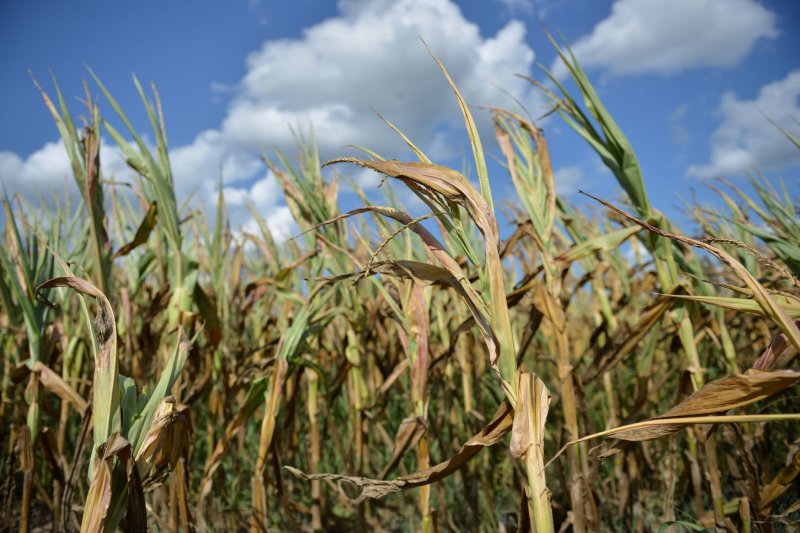Corn plants are seen on August 6, 2012 in Ridgely, Maryland. The Nation's corn crop continues to deteriorate as the country suffers from the worst drought in 56 years. UPI/Kevin Dietsch |
License Photo
June 19 (UPI) -- To better track water use by Earth's plants, NASA is preparing to install a new instrument on the International Space Station.
The instrument is called ECOSTRESS, or ECOsystem Spaceborne Thermal Radiometer Experiment on Space Station, and it will measure the changing temperatures of plants on Earth's surface.
To avoid overheating, plants transpire, just as humans sweat. Transpiration is the process of taking up water through the root system and released it through the plant's pores. The process brings down the plant's temperature.
When there is insufficient water, plants close their pores to avoid drying out. But pores are also essential for the plant's uptake of CO2, the process of photosynthesis, which plants use to produce fuel for their cells.
If a plant is exposed to prolonged "water stress," it will eventually starve or overheat, and die.
"When a plant is so stressed that it turns brown, it's often too late for it to recover," Simon Hook, ECOSTRESS principal investigator at NASA's Jet Propulsion Laboratory, said in a news release. "But measuring the temperature of the plant lets you see that a plant is stressed before it reaches that point."
Using ECOSTRESS, scientists and agricultural agencies can spot signs of mounting water stress -- the beginning of a drought -- by watching for rising temperatures among crop fields. Recognizing water stress early could allow farmers and others to develop a solution and plan accordingly. Scientists have previously experimented with the use of electric leaf sensors to monitor a plant's water intake.
"ECOSTRESS will allow us to monitor rapid changes in crop stress at the field level, enabling earlier and more accurate estimates of how yields will be impacted," said Martha Anderson, an ECOSTRESS science team member with the U.S. Department of Agriculture. "Even short-term moisture stress, if it occurs during a critical stage of crop growth, can significantly impact productivity."
The new instrument will be carried to the space station by the next resupply mission, scheduled to be launched by SpaceX from Florida's Cape Canaveral Air Force Station on June 29.
The instrument will produce high-resolution images of small tracts of farmland at different times of the day. ECOSTRESS will image the same small targets every few days, monitoring changes in temperature.
"As water resources become more critical for our growing population, we need to track precisely how much water our crops need," said Josh Fisher of JPL, lead scientist on the ECOSTRESS project. "We need to know when plants are becoming susceptible to droughts, and we need to know which parts of the ecosystem are more vulnerable because of water stress."
When combined with data collected by NASA's other Earth Observatory satellites, including data related to Earth's water cycles, vegetation changes and precipitation patterns, ECOSTRESS measurements could help scientists better understand how different climate patterns affect regional water stress.
Previous satellite surveys have shown significant shifts in Earth's vegetation over the last few decades.















